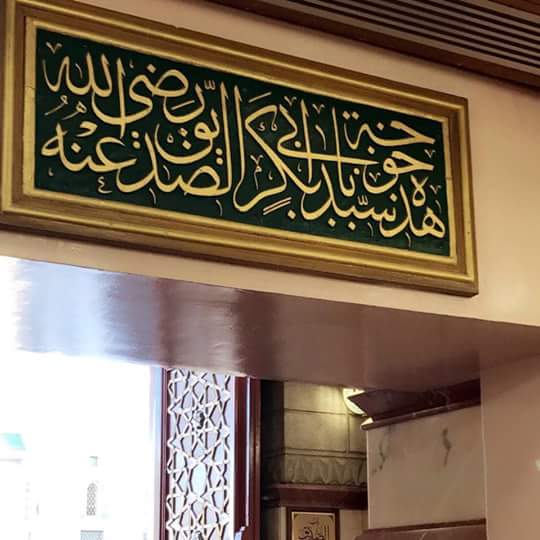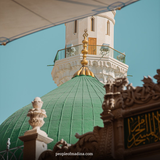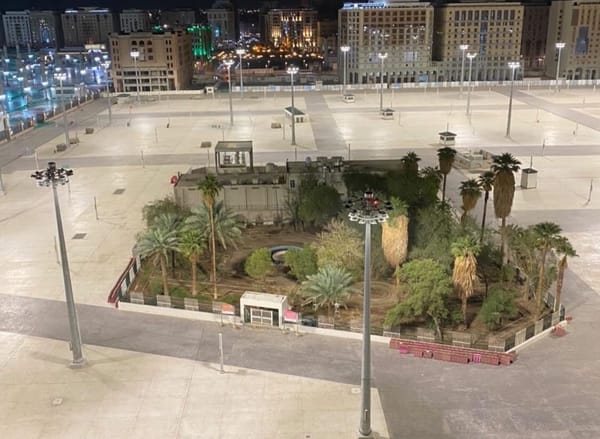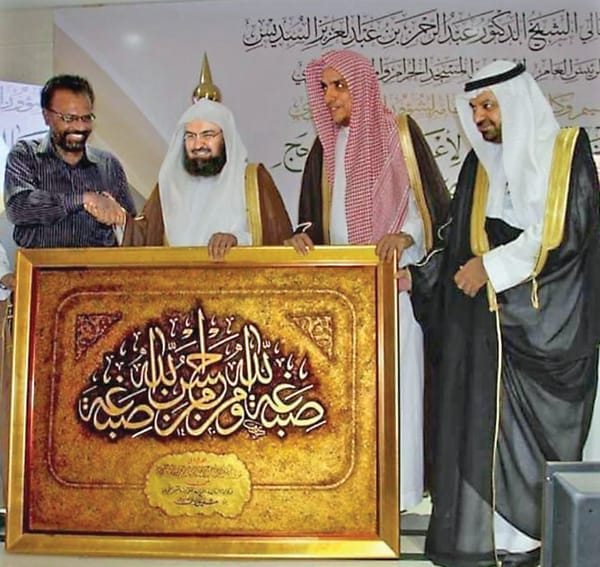The Door of Abu Bakr al-Siddiq
Information about the the historic door of Sayyiduna Abu Bakr al-Siddiq in the Masjid al-Nabawi and its significance in Islamic history.

The door of Abu Bakr Al-Siddiq (may Allah be pleased with him), also referred to in the hadith literature as "Khawkha" of Abu Bakr Al-Siddiq (may Allah be pleased with him) is one of the doors of the Prophet’s Mosque.
At the time of the Prophet (Allah bless him and give him peace) there were a number of homes similar to that of Abu Bakr al-Siddiq (Allah be pleased with him) which had an outer entrance leading into their home and then an entrance from the home itself directly into the masjid itself. The door being referred to here was the one which entered directly into the masjid.
This khawkha (small door or opening) was located to the west of the mosque near the pulpit. When Umar ibn Al-Khattab (may Allah's pleasure be upon him) included Abu Bakr's house (may Allah be pleased with him) into the mosque, he aligned the khawkha to the west of the mosque. However, during the reign of Umar ibn Abdul Aziz, this khawkha was transformed into one of the twenty entrances of the mosque. Historians mention that this door became an entrance to the mosque’s storage area from that side, and it remained so until recent times.
Al-Samhudi mentioned during his time that it was on the western side of the mosque, between Bab Al-Rahma (Gate of Mercy) and Bab Al-Salam (Gate of Peace) and its door was known as the Khawkha of Abu Bakr (may Allah be pleased with him). During the Majidi reconstruction, this door opened to a storage area that did not lead to the street.
However, during the first Saudi reconstruction, this door was replaced with Bab Al-Siddiq (may Allah be pleased with him), consisting of three adjacent openings. The southernmost opening is the original Khawkha of Abu Bakr (may Allah be pleased with him), and it has an inscription stating: 'This is the Khawkha of our master Abu Bakr Al-Siddiq (may Allah be pleased with him)."
The Meaning of Khawkha
Al-Hafiz Ibn Hajar mentioned, quoting Ibn Qurqul, that it is a small door that may have one or no shutters, and its origin is simply an opening in a wall. Al-Allamah Al-Ayni described it as a small door that may have one or two panels (Misra'), and its origin is an opening in the wall. Al-Jawhari said it is an aperture in the wall that allows light to pass through.
It is mentioned in the narration of Abu Saeed Al-Khudri (may Allah be pleased with him), recorded by Muslim, that he said:
"The Messenger of Allah (peace and blessings be upon him) delivered a sermon to the people and said: 'No [internal] door in the mosque shall remain open except the door of Abu Bakr (May Allah be pleased with him).'"
Likewise in a narration by Ibn Abbas (may Allah be pleased with both of them) in Bukhari that he said:
"The Messenger of Allah (peace and blessings be upon him) went out during the illness in which he passed away and said, 'Close all small doors (khawkha) in this mosque except the khawkha of Abu Bakr (may Allah be pleased with him).’"
Significance of this Door
The scholars derived a number of points of benefit relating to the narration regarding this door. Al-Hafiz Ibn Hajar explained that the narration of Ibn Abbas (may Allah's pleasure be upon him) indicates that this took place during the Prophet’s (peace and blessings be upon him) final illness. This was when the Prophet instructed Abu Bakr (may Allah be pleased with him) to lead the people in prayer. Therefore, the Prophet made an exception for Abu Bakr's small door, unlike others. It has been said that this was among the indications of his appointment as successor.
Al-Hafiz Al-Ayni highlighted more than ten benefits from this narration, including:
- As explained by Al-Khattabi, the Prophet’s (peace and blessings be upon him) command to close all doors except the one leading directly to the mosque for Abu Bakr signifies a strong preference and honor for him, as they were always closely connected.
- This indicates that Abu Bakr was given a unique status that no one else shared. The clearest interpretation of this is his appointment as successor (Caliph). This was further emphasized by the Prophet’s (peace and blessings be upon him) instruction for Abu Bakr to lead the prayers, which is the very purpose for which the mosque was built.
Al-Khattabi stated:
"I do not know of any analogy stronger than the consensus of the Companions on Abu Bakr's succession, which they based on the Prophet’s (peace and blessings be upon him) appointment of him in the most significant matter of religion — leading the prayer. They extended this to other affairs as well. Additionally, the Prophet (peace and blessings be upon him) would exit through the door of his house, which was inside the mosque, for prayer. When all the doors were closed except Abu Bakr's, it signified that Abu Bakr would exit through it to lead the prayer. It is as if the Prophet (peace and blessings be upon him) instructed this to be done so that it would be followed by others after him in the same way."





